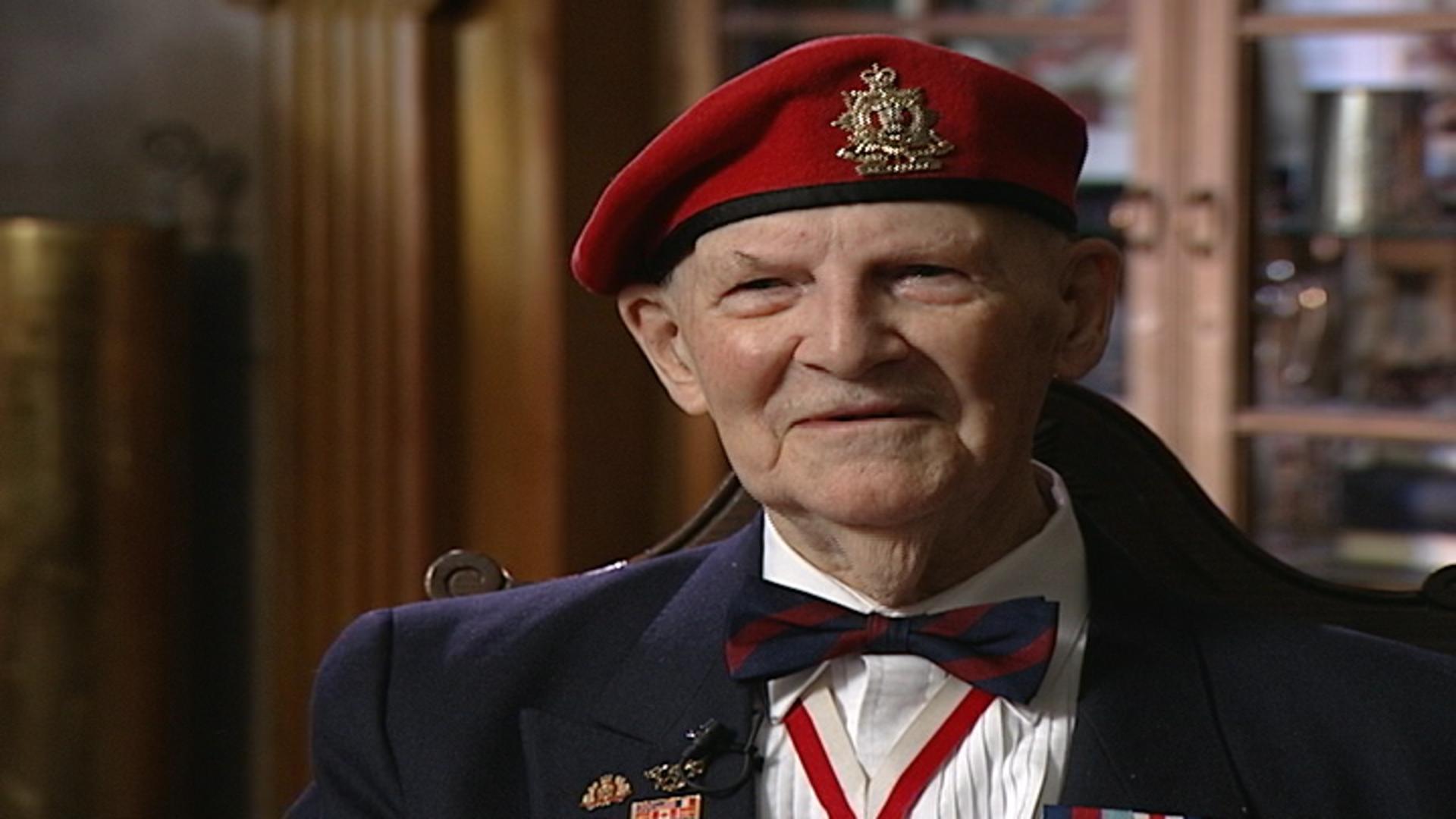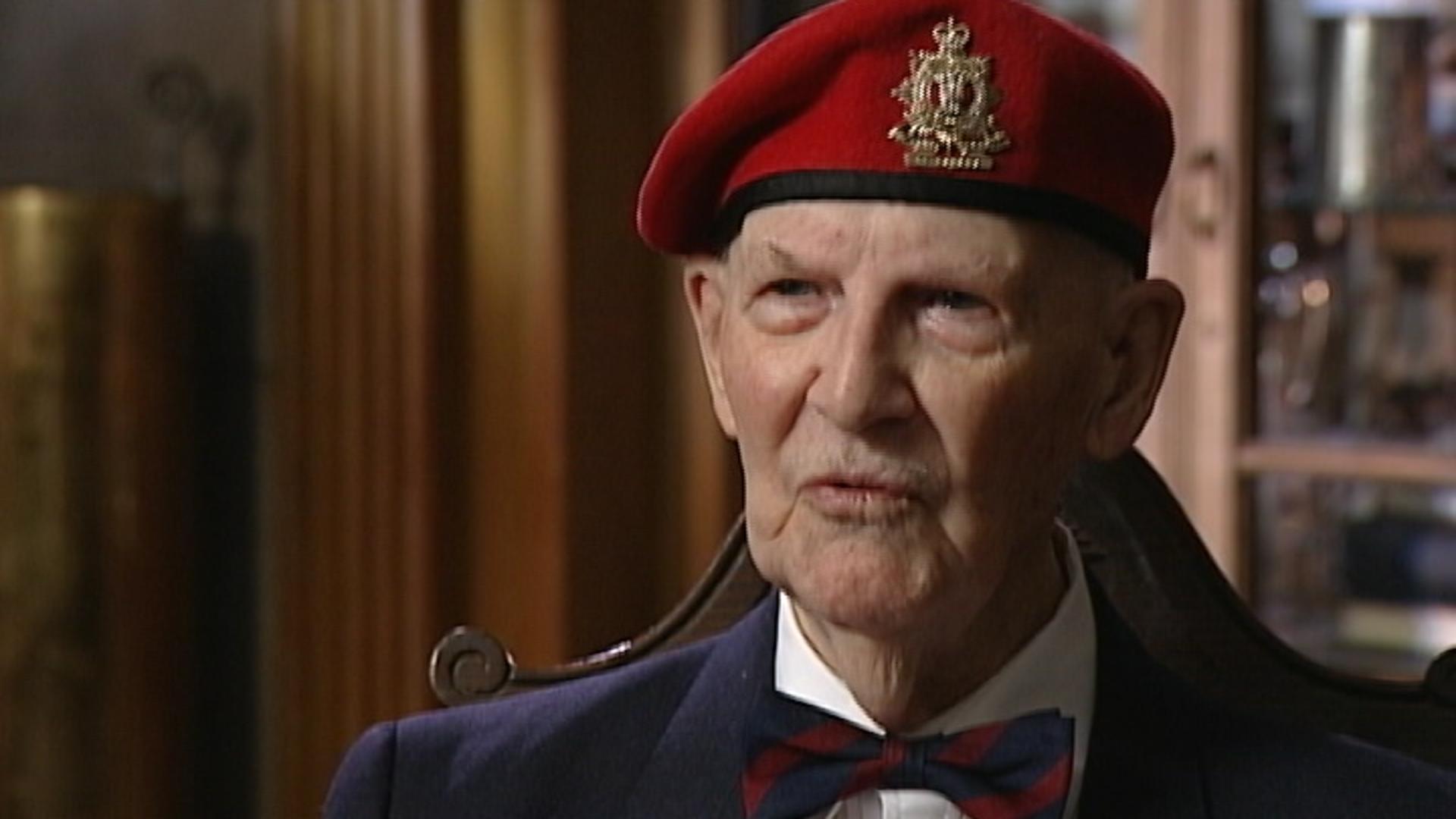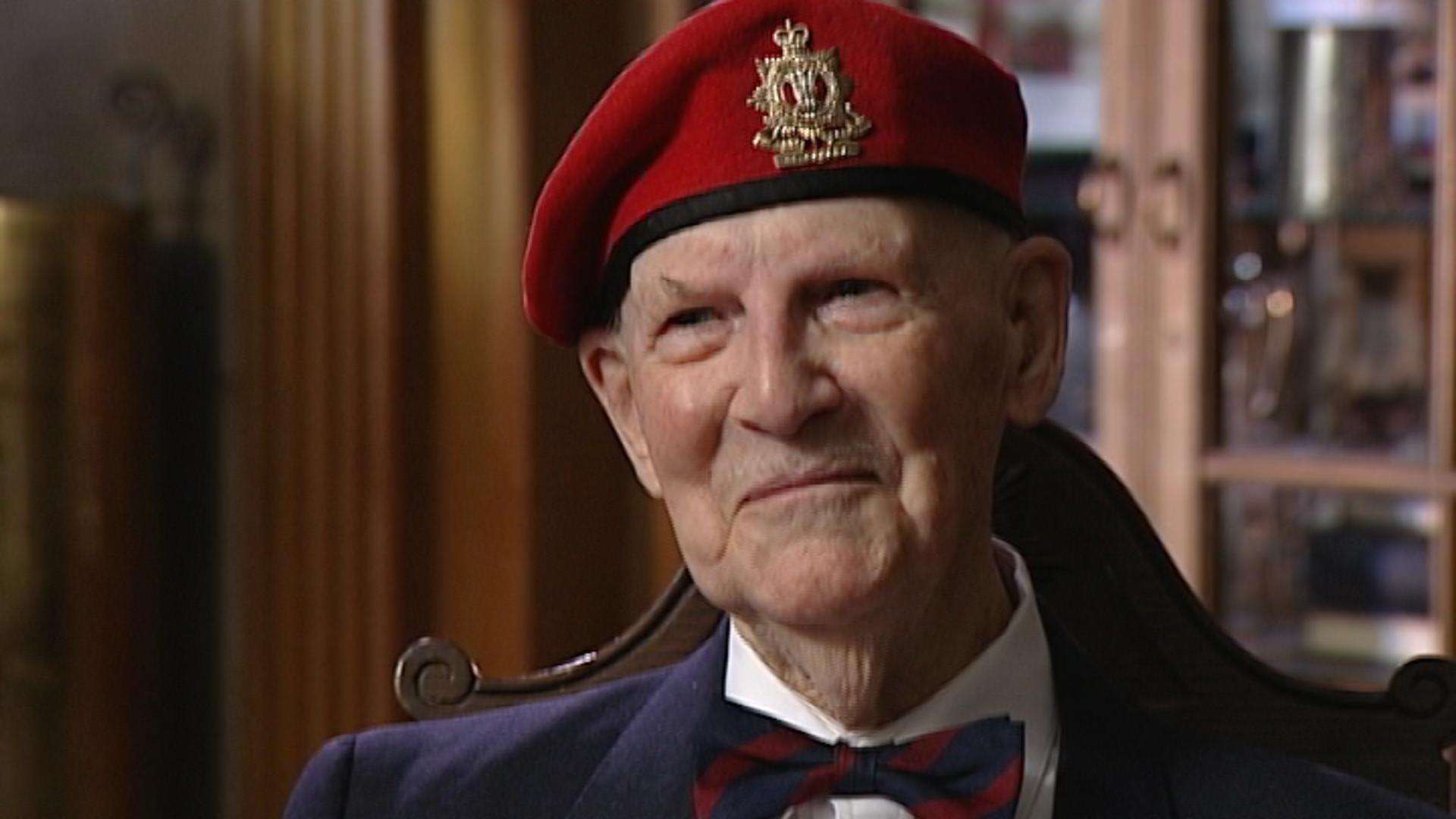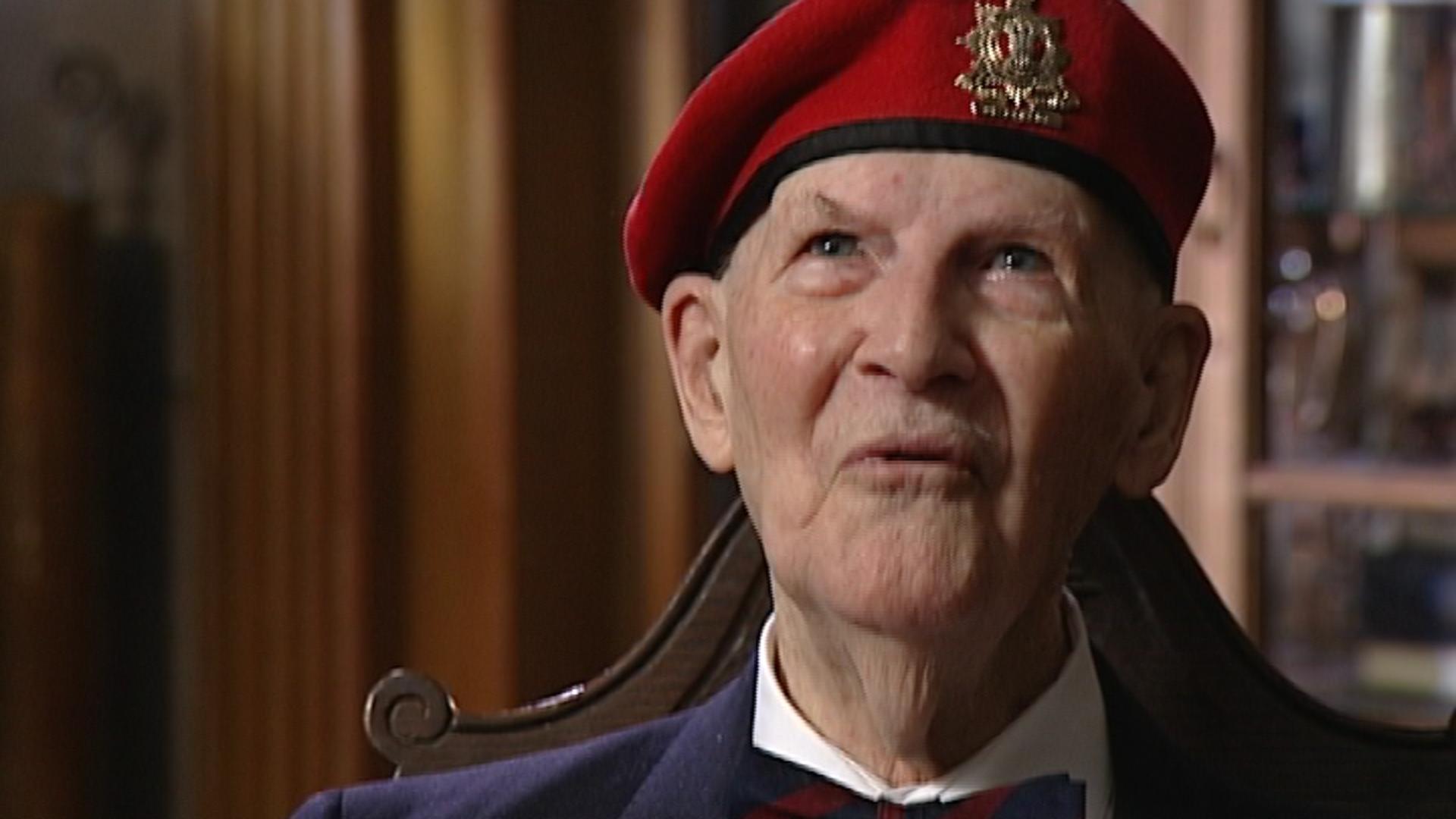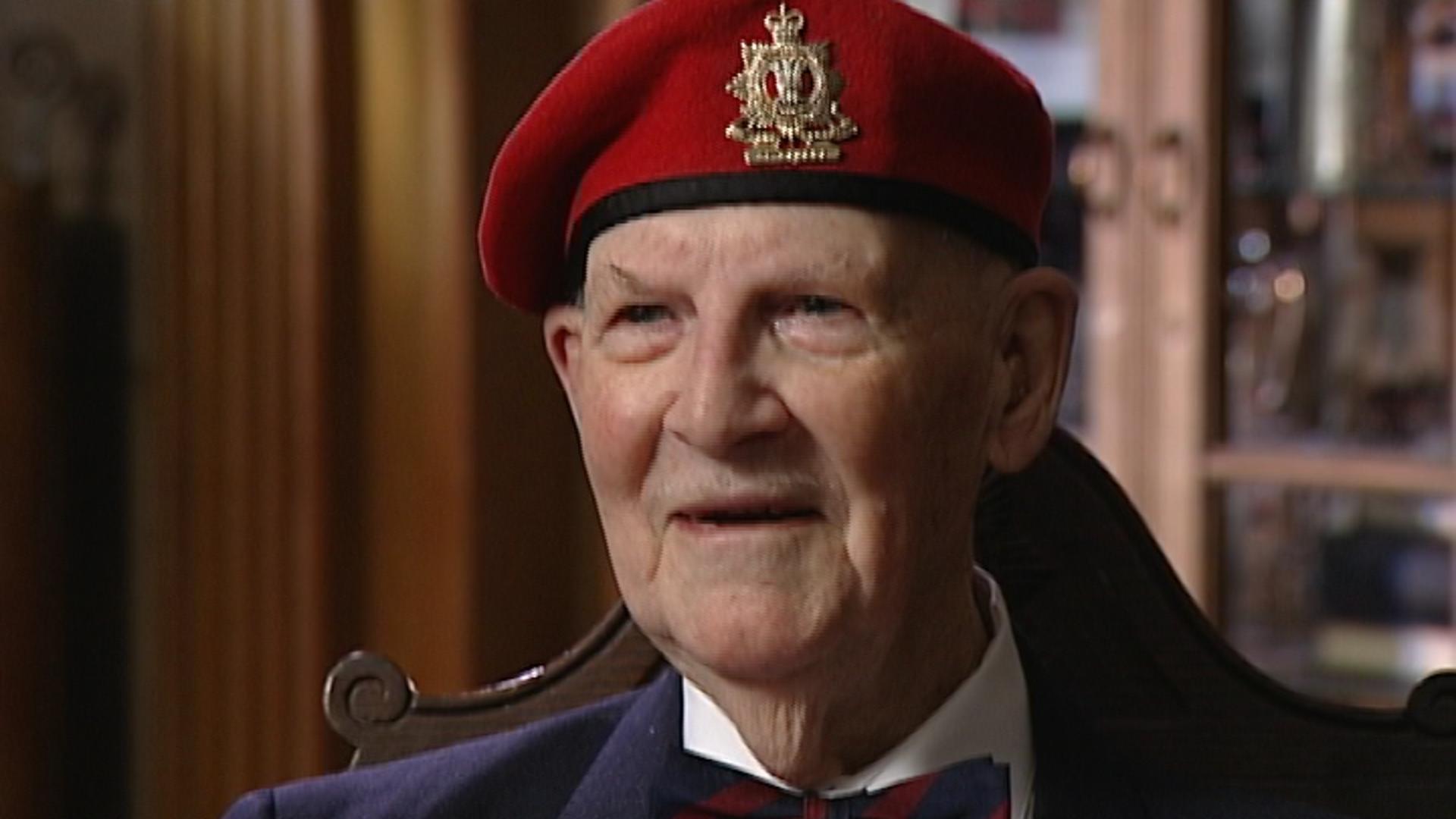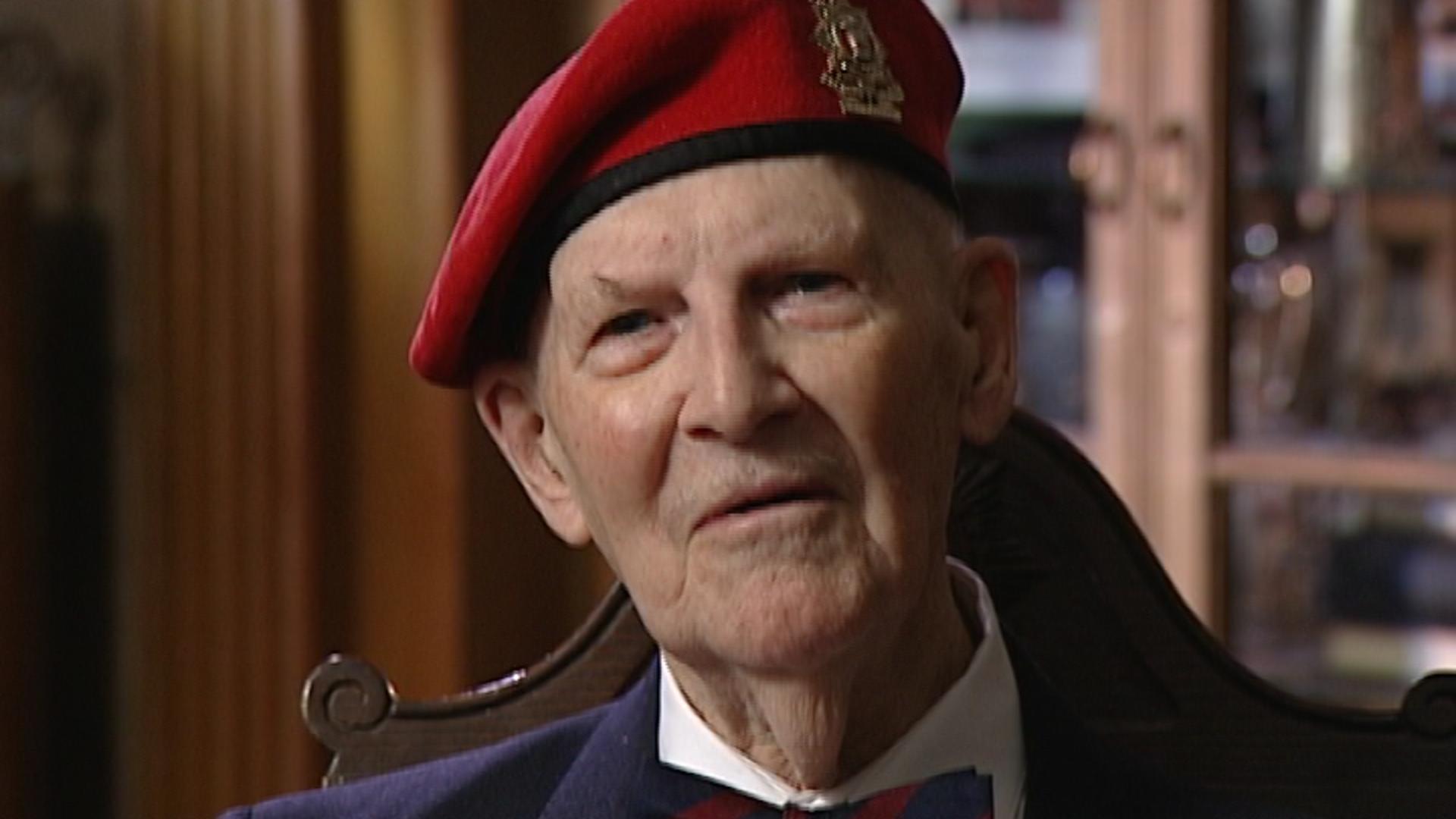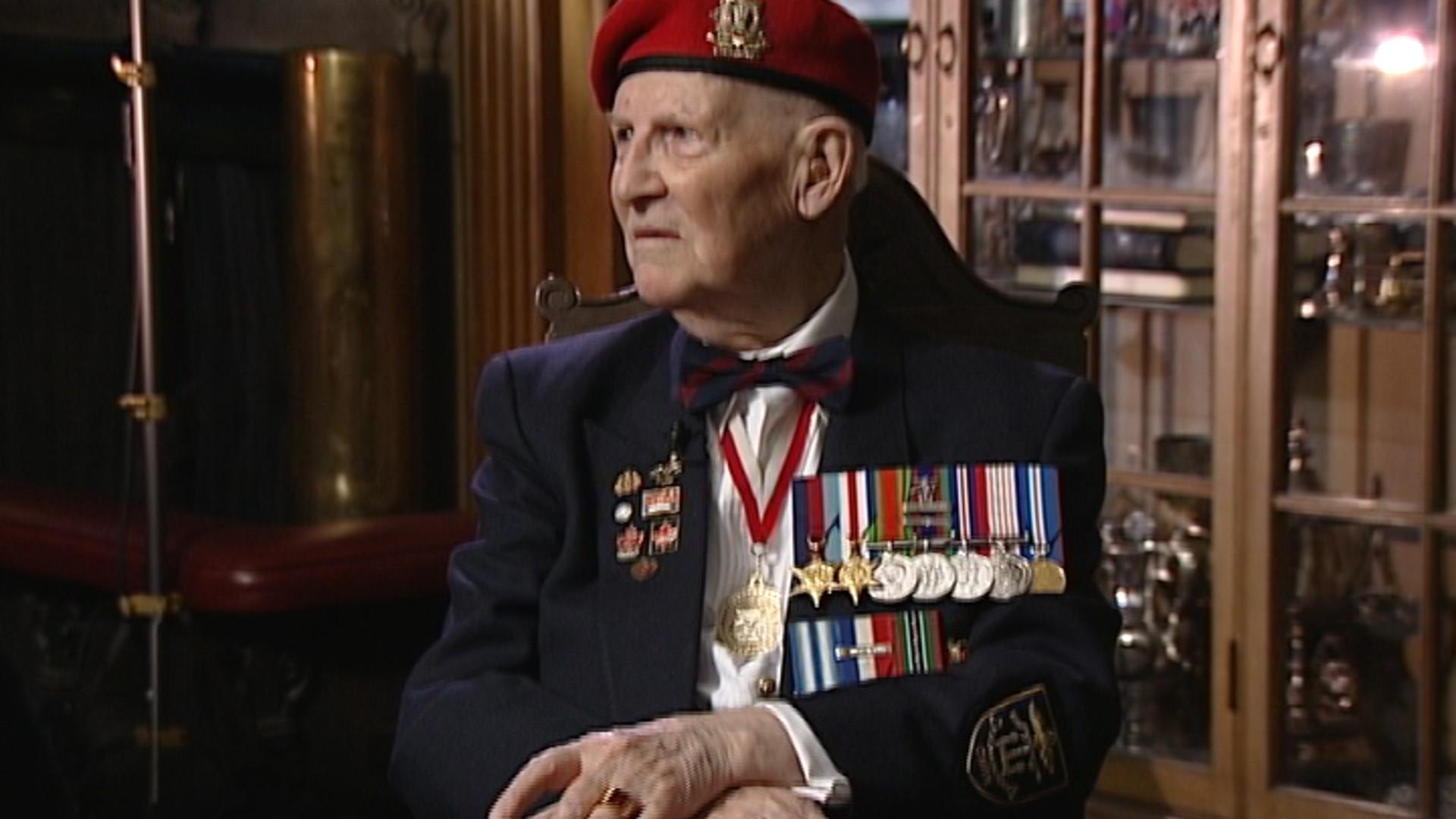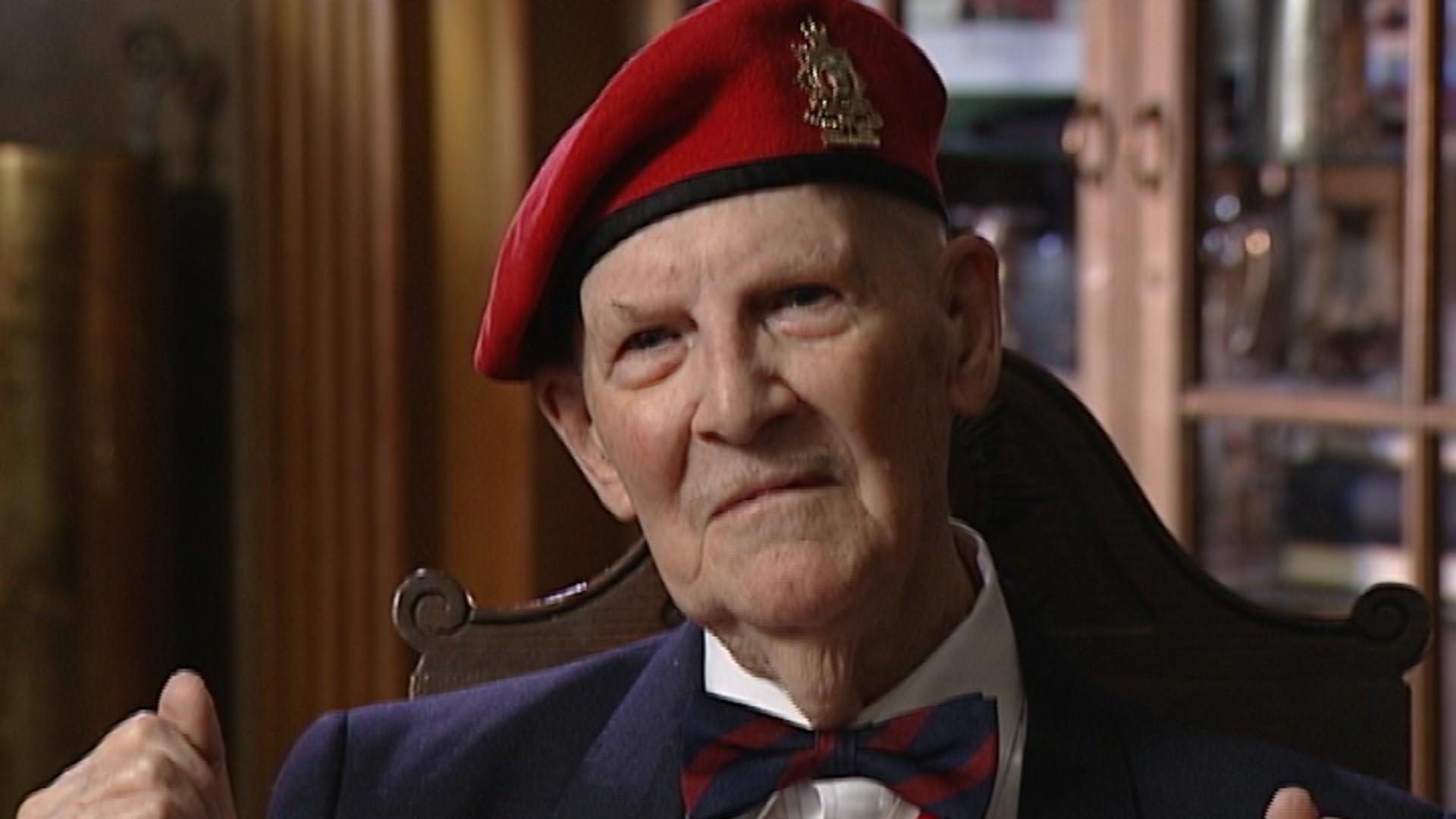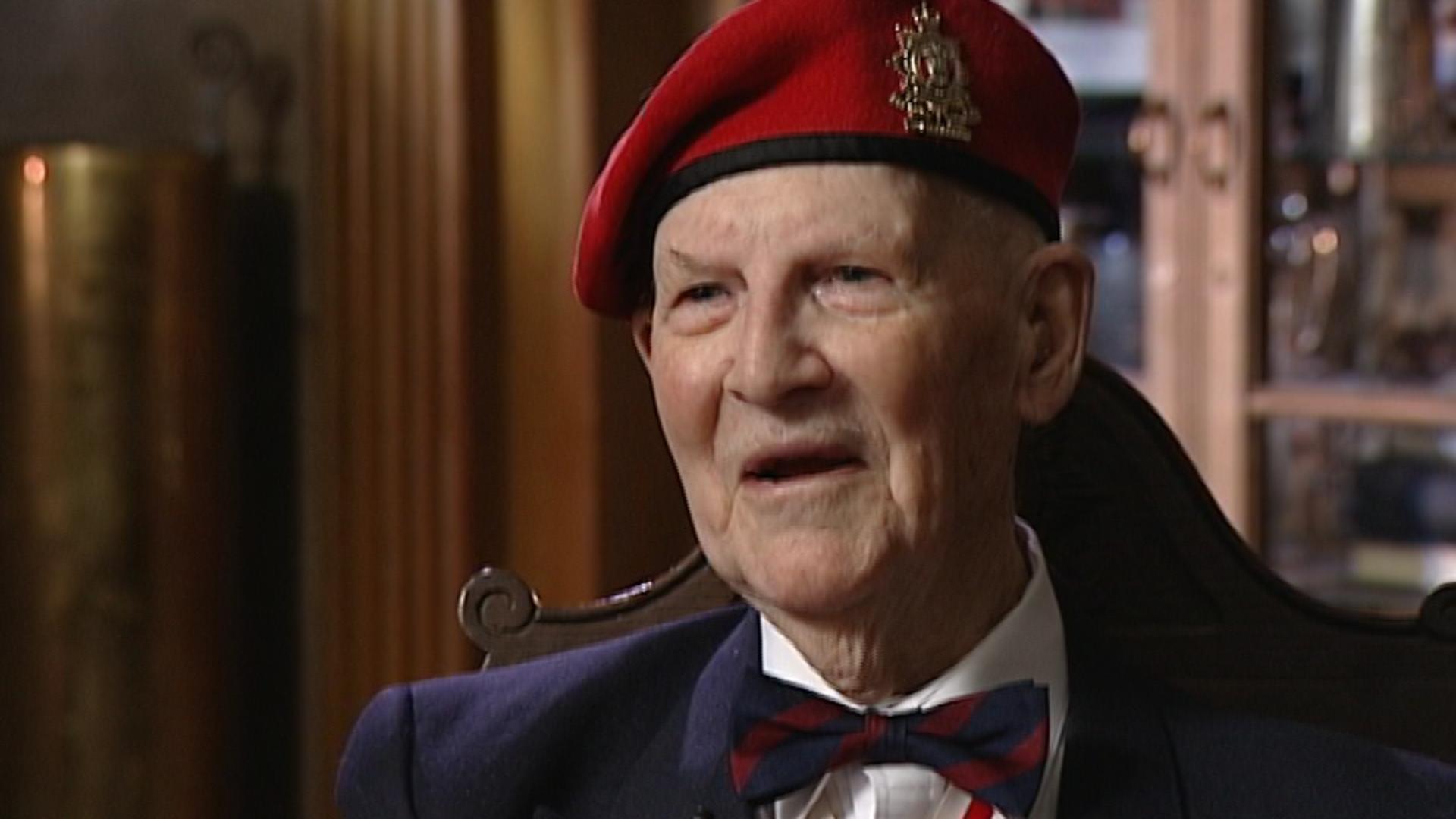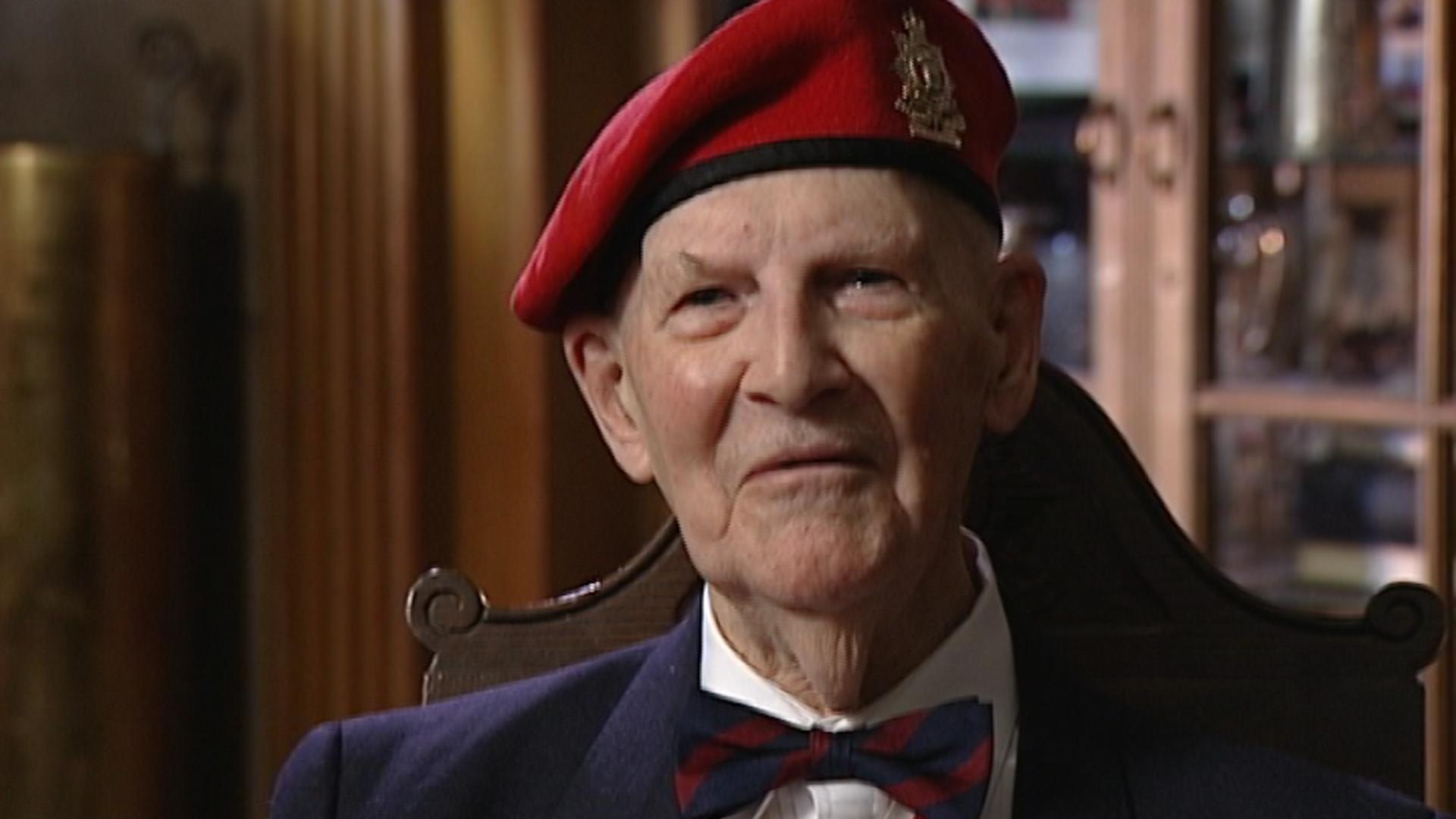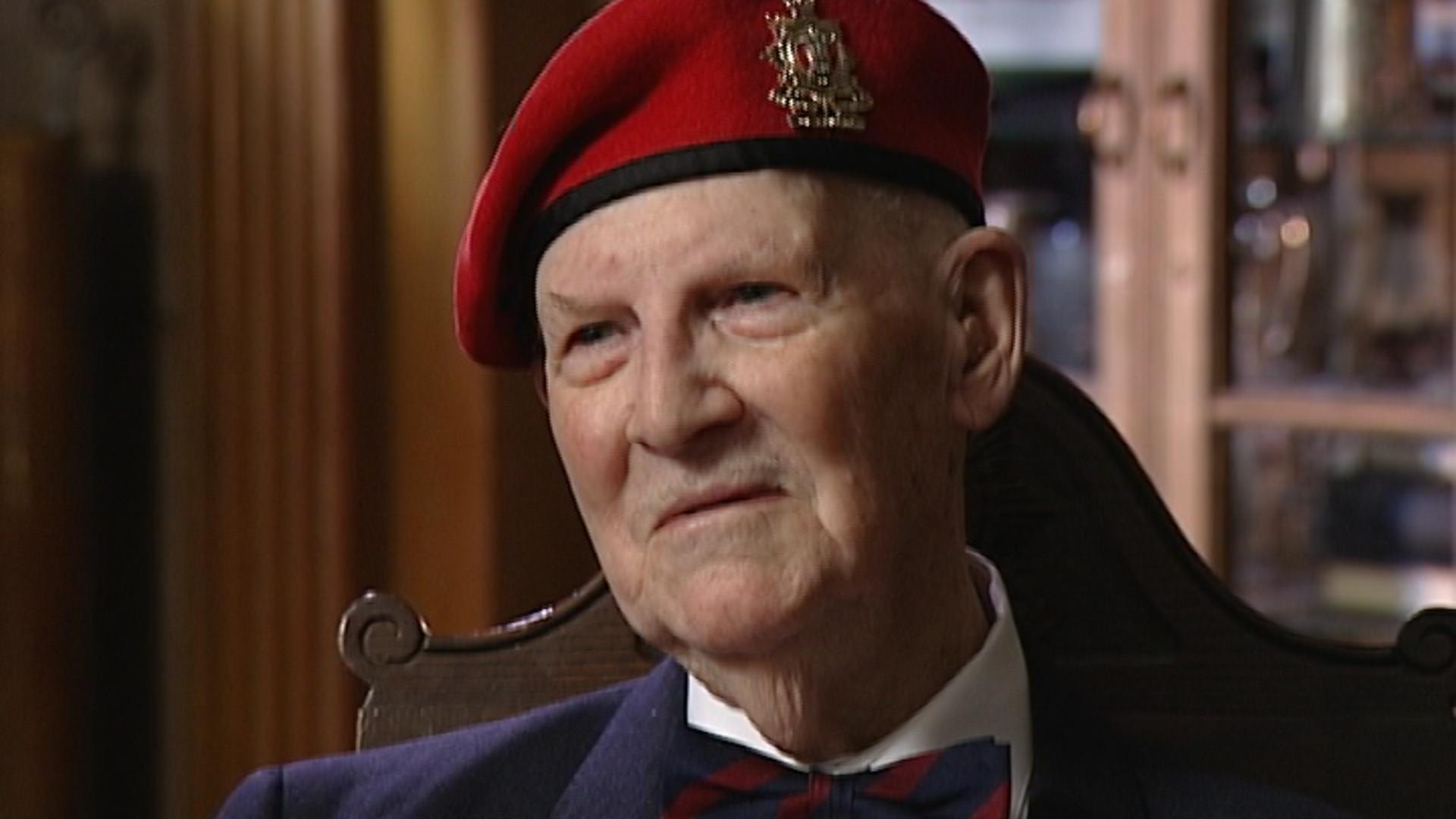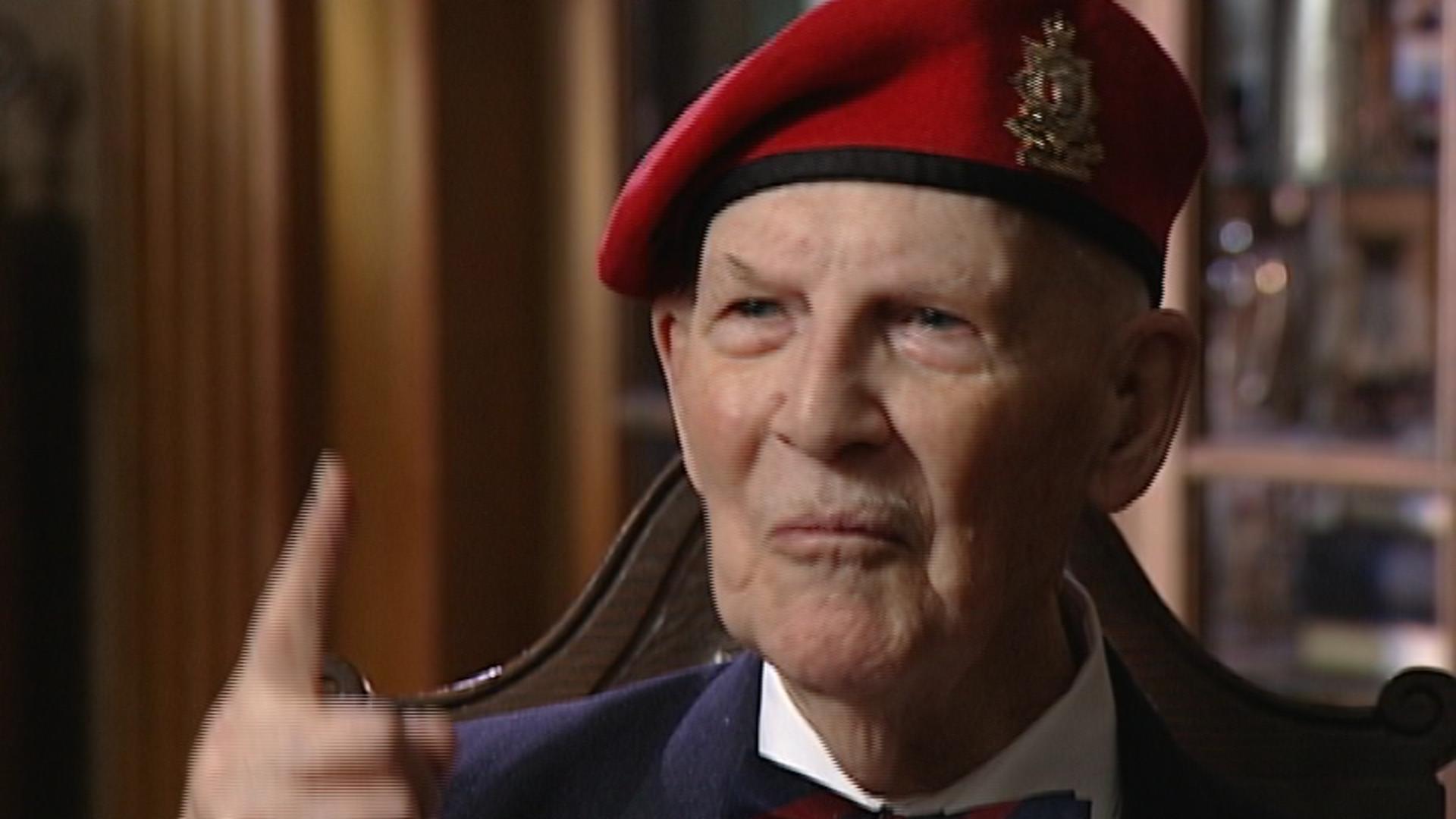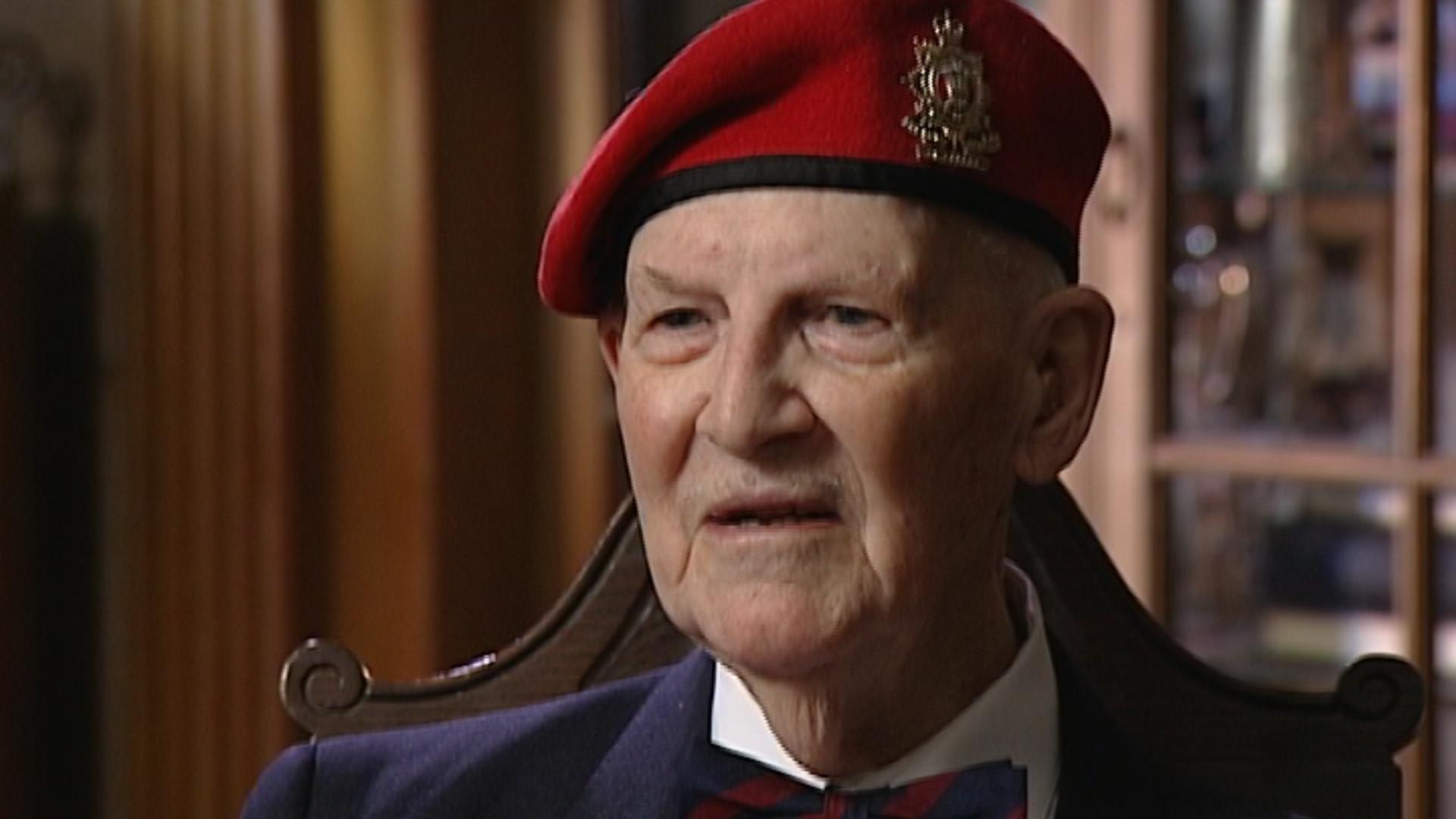The “Dieppe Murderers”
Heroes Remember
The “Dieppe Murderers”
Transcript
Description
Mr. Ryan paints a picture of the conditions of the prison camp he was taken to.
Joseph Anthony Ryan
Joseph Anthony Ryan was born in Montreal in 1920. The circumstances during the depression era saw him and his family moving to Thunder Bay, Ontario in search of a better life. Like many during this time, applying to Canada’s military was a way to find work, adventure and purpose, so in the late 30’s he joined the Lake Superior Regiment and began his training alongside the Princess Patricia’s Canadian Light Infantry and Lord Strathcona’s Horse (Royal Canadians). From participating in operations from Iceland to Dieppe to his time as a prisoner of war in Germany, Joseph Ryan’s stories bring us a unique perspective on the price paid for our freedom.
Meta Data
- Medium:
- Video
- Owner:
- Veterans Affairs Canada
- Recorded:
- May 5, 2009
- Duration:
- 2:16
- Person Interviewed:
- Joseph Anthony Ryan
- War, Conflict or Mission:
- Second World War
- Location/Theatre:
- Germany
- Battle/Campaign:
- Dieppe
- Branch:
- Army
- Units/Ship:
- Royal Regiment of Canada
- Occupation:
- Signaller
Related Videos
- Date modified:



